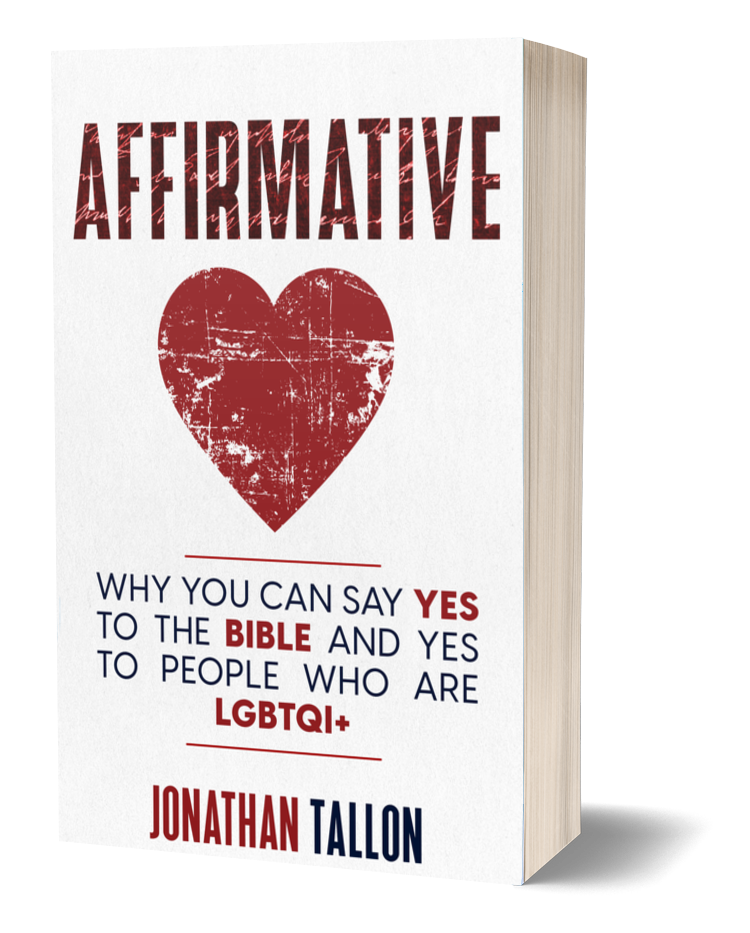What does the Bible say about transgender people? What are the three building blocks that those opposed base their arguments upon? And why are these really poor arguments?
Transcript
What does the Bible say about transgender people? What are the three building blocks that those opposed base their arguments upon? And why are these really poor arguments? Keep watching to find out.
Welcome to the Bible and homosexuality channel – you’re going to learn about three building blocks used by those opposed to transgenderism that try to use the Bible, and why I think the arguments are wrong. Along the way, we’ll also touch on issues to do with intersex people. So we are going to cover the TI of LGBTI.
But first, here are some of the terms that get used, because they may be new or confusing to some of us.
Your gender identity is how you think of yourself – in my mind, I think of myself as a man. That’s my gender identity.
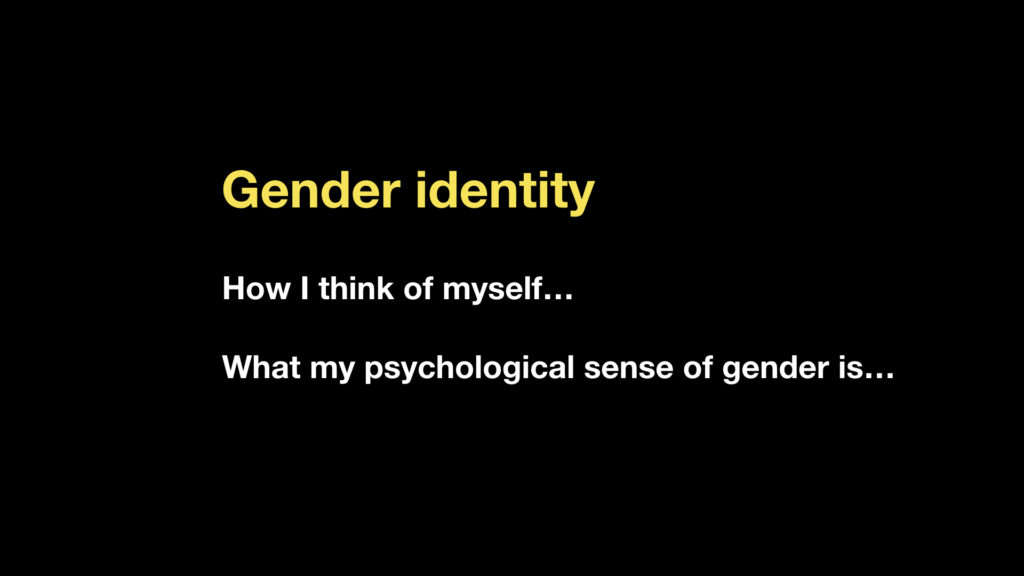
Gender expression is how that comes over in how you live and behave and what you wear. For example, I don’t wear skirts, because in my culture that sends out female signals [I’m boringly conventional]. Gender expression varies from country to country and culture to culture. For example, my baby daughters got mistaken for boys in Spain when we took them there. Why? Well, they were dressed in pink – in England, everyone would know they were girls – but in Spain, they didn’t have their ears pierced, and so everyone thought they must be boys. So gender expression varies from place to place.
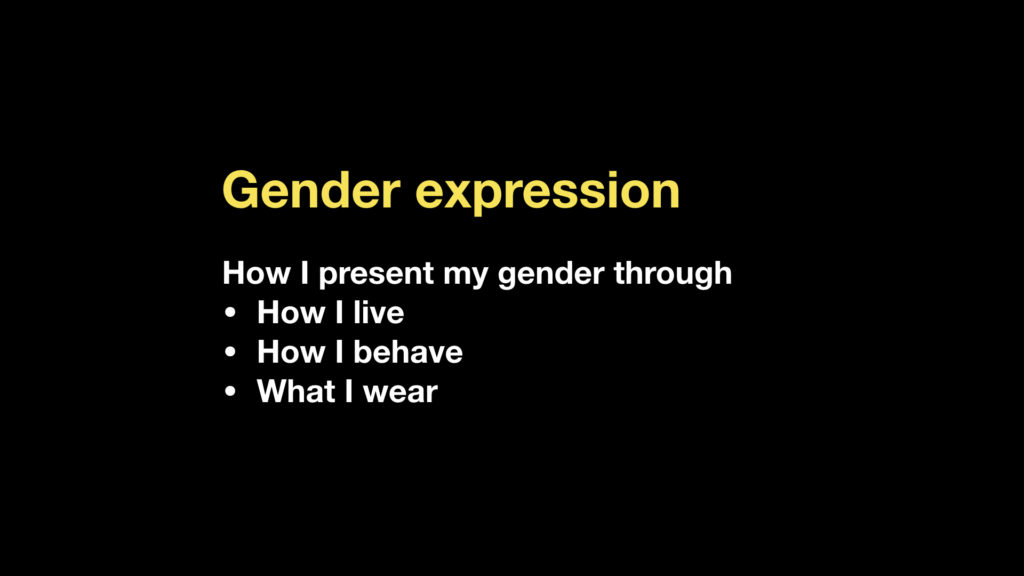
Biological sex refers to the physical stuff associated with being male or female – this includes genitalia and body shape, but also includes things like chromosomes and hormones and even your physical brain structure.
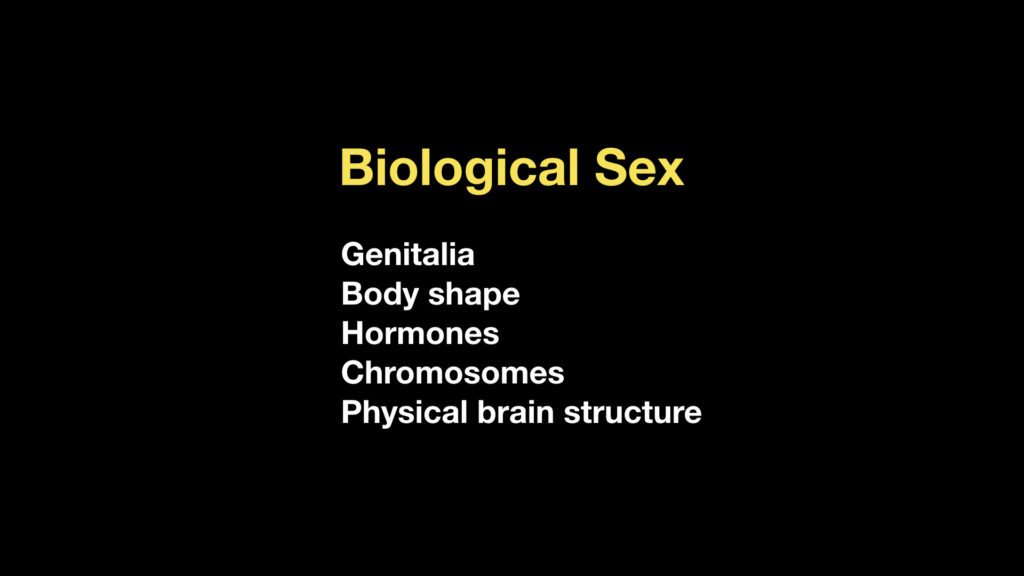
And someone who is transgender is someone who has transitioned from their gender associated with their biological sex to the other – so a trans woman is someone who used to be identified as a male, but identifies [and expresses their gender, and may also seek to change their physical body] as a female.
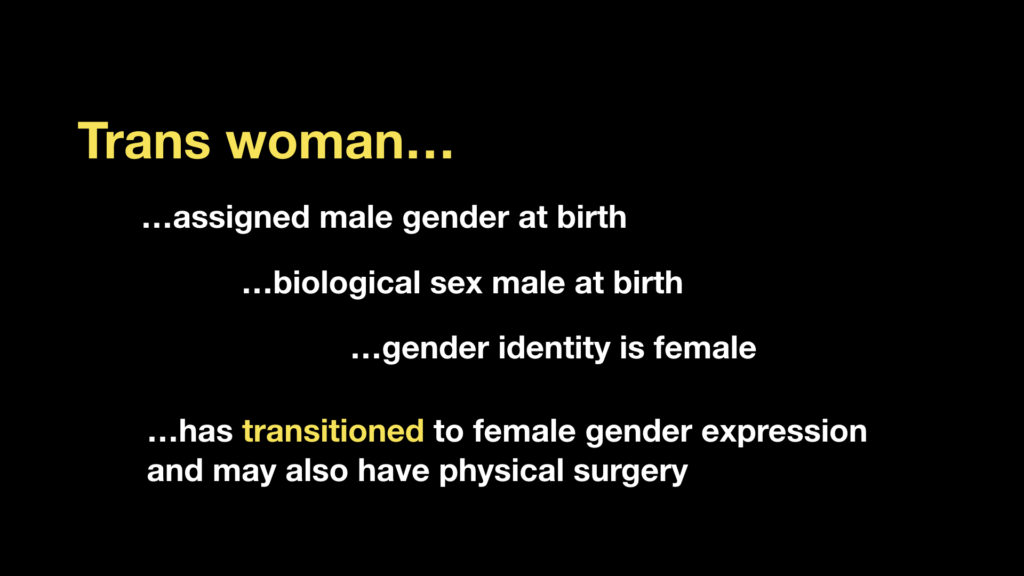
That’s the terminology. Now let’s look at the Bible and transgender issues.
Most of the objections that people appeal to the Bible for against transgenderism rest on three building blocks. We’re going to look at each of these in turn.
The three arguments
First, God made us male and female – two distinct genders.
Secondly, God doesn’t make mistakes, so your gender identity needs to match your biological sex.
Thirdly, gender confusion is a bad thing – God made males and females distinct and those differences shouldn’t be blurred.
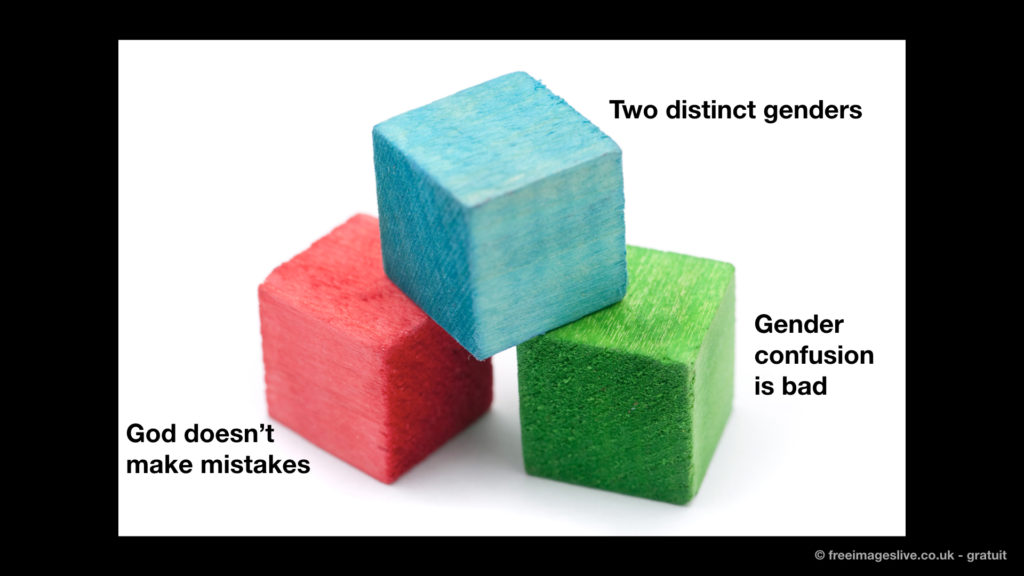
What if someone has a gender identity – how they think of themselves – that’s different from their biological sex? The response is usually along the lines of: well, that’s sad, and we must be compassionate, but gender dysphoria is a mental health problem and it should be addressed by encouraging the person to identify with their biological sex.
First argument – God made two distinct genders
Let’s look at the first building block more closely, that God made two distinct genders, male and female.
Now of course the passages in the Bible which are usually talked about at this point are the creation accounts in Genesis 1 and 2, and also other passages that refer back to these, for example when Jesus does it in Matthew and Mark [Matthew 19:4-5; Mark 10:5-9].
But it seems strange to use Genesis 1 and 2 to say that God only made a male and a female and that therefore this must apply to everyone since. Sure, it applies to the vast majority. But according to studies, only about 1 in 5,000 to 1 in 50,000 of the population are transgender [numbers vary greatly. In the resources section I include a couple of papers that provide a variety of estimates].
The creation accounts in Genesis aren’t focused on unusual situations – they don’t even apply straightforwardly to those who don’t have children or remain single. The creation accounts say that God blesses both male and female, that both are made in his image, that God blesses, if you like, marriage and children.
But Genesis doesn’t try to address transgenderism, or whether you must get married, or whether you must have children. Genesis doesn’t address transgenderism at all.
But let’s also consider the problem in claiming that there are two distinct biological sexes. That’s true for most people, but it’s not true for everyone.
Here we need to consider people who are intersex. What does that mean?
Put simply, there are a number of markers of biological sex. For example, your chromosomes, which carry your DNA. XY chromosomes are considered male, XX female. But then hormones have a massive influence on how our bodies develop in the womb, and at puberty. And also there is what our bodies actually look like – what shape are they, what genitalia we have. And there’s also our physical brain – female brains are, on average, slightly different in structure from male brains. And, of course, there is our sense of identity – that we feel male or female.
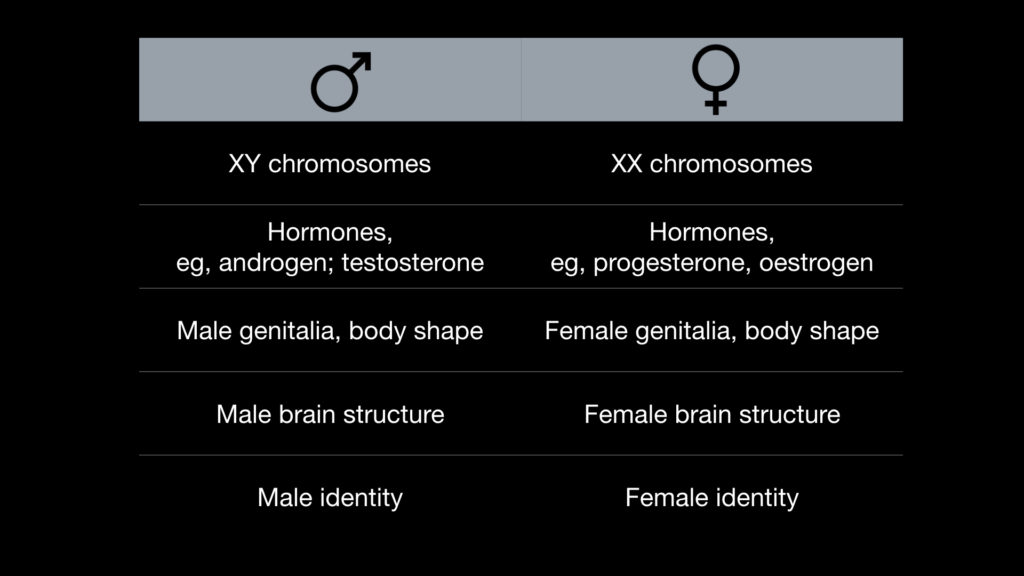
Usually, all of these line up neatly. For example, someone with XY chromosomes gets hormones for male development in the womb, and then is born with male genitalia, and grows up through puberty into a typical male shape, with a male brain structure and who thinks of themselves as male. And vice versa for women.
But not always. Occasionally, women are born with XY chromosomes. How come? Because from being in the womb their bodies don’t react to a male hormone. These females have what are usually considered male chromosomes. [This NHS website has more information]
You can also get the opposite – those with XX (female) chromosomes who develop from the womb as males.
And you can even get the situation where the chromosomes are typically male – XY – but they are born looking female, but then at puberty develop into males. [The BBC has an article on the guevedoces, as they are known in the Dominican Republic]
And there are a range of conditions where the body has some typically male biological elements and some typically female biological elements.
Broadly, people with these features, where not all the biological markers line up together neatly, come under the intersex category – the I in LGBTI.
The conditions are rare, but they show clearly that there is no single biological marker you can point to and say this definitively makes someone male or female.
Chromosomes, hormones, brain structure, and physical appearance don’t always line up neatly. It’s scientifically wrong to say that the biological sexes are always distinct.
Intersex people aren’t addressed directly in scripture at all. So how do some commentators handle the reality of intersex people? I’m afraid often just by ignoring them entirely. Or by saying that it is a result of the fall, it is a groaning of creation [Romans 8], and in any case they are clearly exceptions.
But if this is true for those who are intersex, it also is true for those who are transgender or who are seeking to transition.
Some people have a deep-seated, permanent sense that their gender identity is different from the one assigned at birth. We don’t know why exactly this happens, but it is at least partly biological in cause.
If an identical twin transitions, there is a 20-30% chance that their sibling, with the same DNA, will also transition. If a non-identical twin transitions, sharing 50% of the same DNA and the same womb, the chance that their sibling also transitions drops to 2% or lower.
Additionally, some studies have suggested that the physical brain structure is more likely to resemble their preferred gender identity, though this evidence is less conclusive. But gender identity is partly biological in nature. [See resources below for some of the papers which have provided this evidence.]
So, like intersex, we have biological indicators and other indicators – your sense of identity here – not all lining up together neatly.
The first building block is simply wrong. Some people – not many, but including trans people – do not fit neatly into one distinct gender or the other where everything lines up together.
The second argument – God doesn’t make mistakes
But what about the second building block? God doesn’t make mistakes, and therefore your gender identity ought to match your biological sex.
This makes no sense on so many different levels to me. How does this apply to intersex people? If God creates them as part of his good creation (which I actually think) and they are part of his great variety that he looked upon and saw and said was good, then why can’t trans people be in the same position?
But if intersex people are the result of the fall and therefore an exception, but therefore we can make allowances for them [this is slightly clumsily worded: I meant that our theology must allow for the reality of intersex people and the reality of markers of sex being mixed] – again, why can’t we do the same with trans people? ‘God doesn’t make mistakes’ I’m afraid here – the way it is being used – is just an empty slogan.
More importantly, if there is a mismatch, why does the physical body take priority over the mind and sense of identity?
I’ve seen this expressed as: it’s just feelings compared with being, or psychology compared with ontology. But that’s not taking our sense of self seriously enough – our mind and spirit – and taking our bodies too seriously. Paul says, ‘we have this treasure in clay jars…’ [2 Cor. 4:7] – is that treasure just a feeling, just psychology? Which is more important – the clay jar or the treasure?
Yes, we need to take our physical bodies seriously – we follow an incarnate Christ. Our bodies are real. But so is what is going on inside us. Our minds are real too.
Is making a commitment to Christ real, or just a feeling? Is having an identity in Christ real, or just psychology? To reduce biology to being the only reality is sub-Christian.
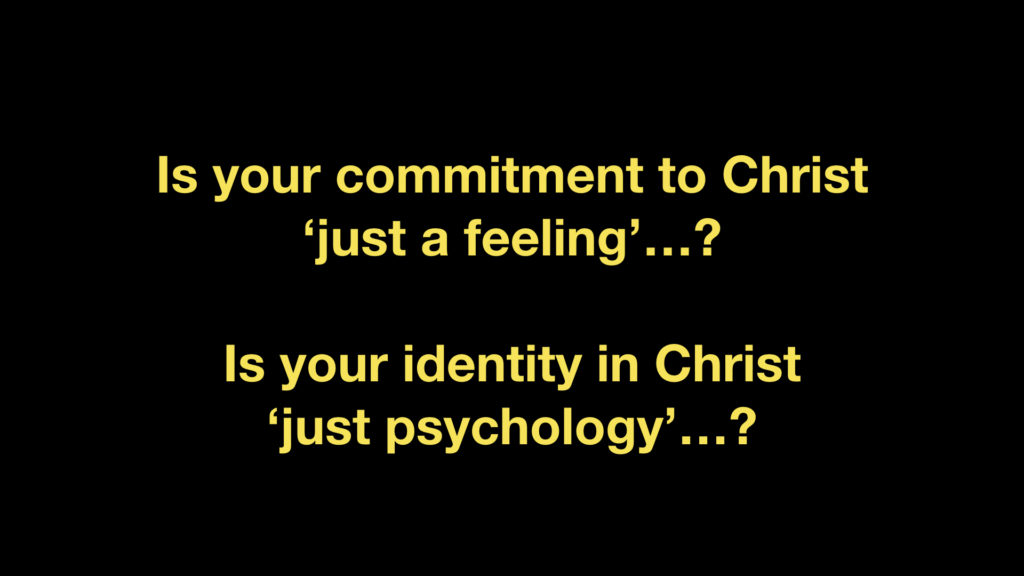
But we can go further than this. We’ve seen in any case that part of being trans is based on biology; that there are biological causes lying behind it. You cannot separate being trans from the body.
So when there’s a mismatch, why privilege the body over the sense of identity? Scripture doesn’t tell us to do that. That’s something that others impose on scripture; that they read into the Bible.
If someone has a strong, abiding, permanent sense of one particular gender identity, there’s nothing in scripture to say that they shouldn’t seek to bring their body and gender expression into line with that rather than the other way around.
So the second building block – that the biological sex ought to take priority – is not biblical. It’s just an assumption, and a poor one at that.
The third argument – gender confusion is wrong
The third building block of the argument against is that gender confusion is wrong. I’ll skip in this video arguments about whether that’s always the case, and also whether gender confusion is the most helpful term.
Why? Because, actually, for this argument it doesn’t matter. People who are trans haven’t chosen to have a mismatch between their gender identity and their biological sex. They haven’t gone seeking any ‘confusion’, if you want to use that term. Instead, they are people who are actually trying to bring things more into line.
They are trying to bring their biological sex and their gender expression in line with their gender identity – if anything, they are seeking to reduce ‘confusion’.
Conclusion
So God made male and female – but he also made intersex people and people who are transgender. And the scriptures don’t address those situations directly.
Should our biological sex take priority over our sense of identity? The scriptures don’t tell us to do that. That’s something imposed on the scriptures.
Is gender confusion wrong? But transitioning is a way of bringing gender identity, gender expression and biological sex more into line with each other. That’s not confusing – that’s trying to sort confusion out.
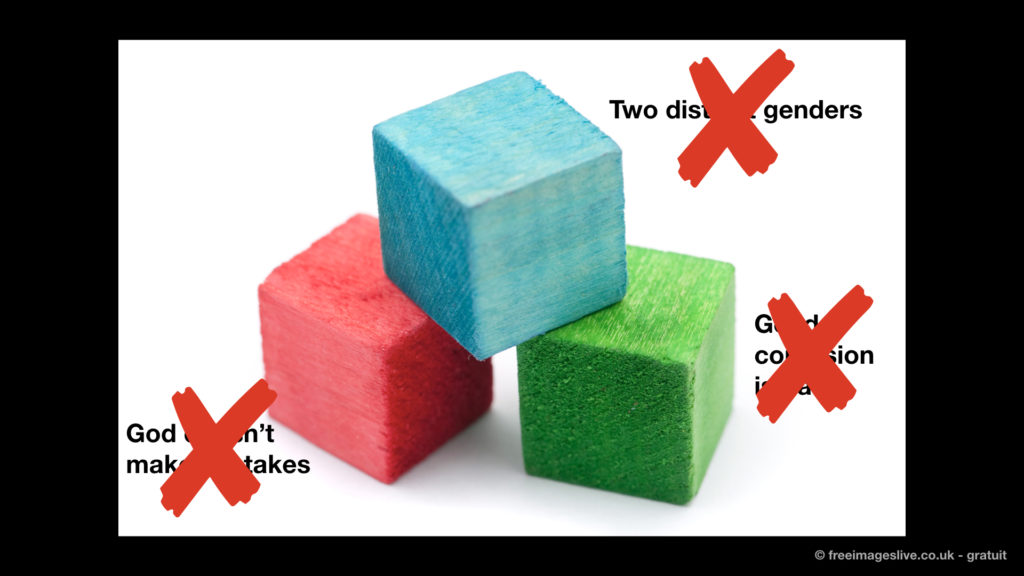
What does the Bible say about transgender people? Directly, not a lot. It’s wrong to use the Bible to condemn transgender people. You can be a transgender Christian loved by God.
If you’ve found this helpful, hit the like button, subscribe to the channel, and you can find more help and resources at www.bibleandhomosexuality.org.
Found this helpful? You can now get the material from this website and more in a book. Affirmative: Why You Can Say Yes to the Bible and Yes to LGBTQI+ People is available at Amazon and other major retailers. You can find out some more about the book here.
Resources
Science and transgenderism
I refer to some scientific statistics in the video. Here are some of the papers on which they are based. I give approximate figures; different approaches give different ranges. For example, under some measures people who are intersex make up over 1% of the population; using different criteria this figure drops dramatically. Similarly, the figure for the proportion of the population which is transgender varies depending upon when and where the study was done (we should expect higher figures as a society becomes more tolerant of transgender people).
The range of figures for prevalence are outlined in some general studies that also includes information on other aspects:
Keo-Meier, C., & M. Labuski, C. (2013). The Demographics of the Transgender Population. In A. K. Baumle (Ed.), International Handbook on the Demography of Sexuality (pp. 289-327). New York: Springer.
Zucker, K. J., Lawrence, A. A., & Kreukels, B. P. C. (2016). Gender Dysphoria in Adults. Annual Review of Clinical Psychology, 12, 217-247. https://doi.org/10.1146/annurev-clinpsy-021815-093034
The evidence for a biological component to gender identity comes from twin studies. If the cause is part genetic, we might expect identical twins to be more alike than non-identical twins (who broadly share the same social environment). That is exactly what a number of twin studies have found, showing that genetics has a part to play in gender identity, for example:
Diamond, M. (2013). Transsexuality Among Twins: Identity Concordance, Transition, Rearing, and Orientation. International Journal of Transgenderism, 14, 24-38. https://doi.org/10.1080/15532739.2013.750222
When it comes to brain structure, a number of different approaches have been taken, some showing more of an effect than others. The approaches and results are summarised in this paper:
Smith, E. S., Junger, J., Derntl, B., & Habel, U. (2015). The transsexual brain – A review of findings on the neural basis of transsexualism. Neuroscience & Biobehavioral Reviews, 59, 251-266. doi:https://doi.org/10.1016/j.neubiorev.2015.09.008
Bible and transgenderism
In the video, I do not consider in detail any one verse from the Bible – that is because I do not consider that any verses in the Bible directly address transgender people.
However, there are some verses that are pointed to, so here is a quick response to each.
Deuteronomy 22:5 – A woman shall not wear a man’s apparel, nor shall a man put on a woman’s garment; for whoever does such things is abhorrent to the LORD your God.
It is first worth noting that this verse could only be relevant if you assume that a trans-man is ‘really’ a woman or vice versa. But this is precisely what is at stake: how do we decide whether someone is a man or a woman, when biology and identity don’t match? It is an example of the type of verse used to condemn ‘gender confusion’, which isn’t an appropriate criticism of those who are transgender. (This also applies to such passages as 1 Corinthians 11:2-16.)
Secondly, it is actually far from clear what the context of this verse is. For example, many of the cultures surrounding ancient Israel had religious practices that included the pagan priests who cross-dressed. Thus cross-dressing becomes a symbol of idolatry. Whatever the original context, it is highly unlikely that the writer or original audience had people who are transgender in mind. This article deals with the issues more closely:
Vedeler, H. T. (2008). Reconstructing Meaning in Deuteronomy 22:5: Gender, Society, and Transvestitism in Israel and the Ancient near East. Journal of Biblical Literature, 127(3), 459-476. doi:10.2307/25610133
A broader area where there are some parallels concerns eunuchs. Beyond noting that the New Testament seems positive towards those who were eunuchs (eg Acts 8:26-40). I have not dealt with these passages in this video, because although I think they are a rich resource for those who are transgender, the two remain separate (though related) categories. People who were eunuchs were not transgender, and vice versa.
Some biblical resources are beginning to appear for those who are transgender, or are interested in this area. Here are some of them:
Hartke, A. (2018). Transforming: The Bible and the Lives of Transgender Christians. Louisville, Kentucky: Westminster John Knox Press.
Herzer, L. T. (2016). The Bible and the Transgender Experience. Cleveland, Ohio: Pilgrim Press.
Hornsby, T. A., & Guest, D. (2016). Transgender, Intersex, and Biblical Interpretation. Atlanta: SBL Press.
Finally, not strictly about the Bible and transgenderism, but the lived experience of a transgender Christian:
Mann, R. (2012). Dazzling Darkness: Gender, Sexuality, Illness and God. Glasgow: Wild Goose Publications.
Gender variant and Queer
This video doesn’t seek to address the issues around people who would describe themselves as gender-variant or queer (or other designations). The aim was to show that, on their own terms, the arguments against transgenderism are poor.
There is a separate argument about what is sometimes called ‘gender confusion’, and how people who are intersex, transgender, gender-variant or queer undermine some of the assumptions that lie behind this phrase.

